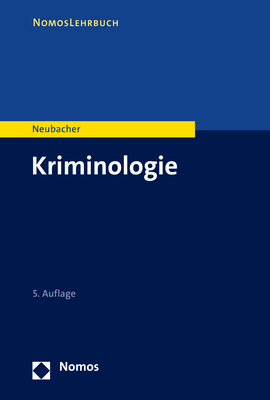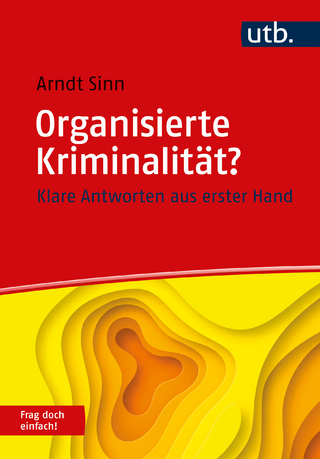
Corrections: A Text/Reader
SAGE Publications Inc (Verlag)
978-1-5443-3922-1 (ISBN)
New to the Third Edition
Nearly 75% of the journal articles have been updated to introduce students to current research on important topics such as racial and ethnic disparities in probation, influences on inmate misconduct, transgender prison inmates, and lethal injection protocol.
Updated and expanded coverage of ethical considerations, special populations, and the history of corrections provides students with the context for understanding policy decisions and their consequences, both past and present.
New Sections on Ethics (Section IV) and the Death Penalty (Section XVI) offer students insights into key issues in corrections today.
More coverage on disparities in sentencing and drug courts encourages students to think critically about U.S. drug policies and their effectiveness.
Additional content on federal procedures and private prisons shows real examples of private prisons, their profit motives, and the effect they have on the correctional system.
The most current data, facts, statistics, and research are included throughout the book to provide students with insights into the world of corrections today.
Give your students the SAGE edge!
SAGE edge offers a robust online environment featuring an impressive array of free tools and resources for review, study, and further exploration, keeping both instructors and students on the cutting edge of teaching and learning.
Mary K. Stohr is a professor in the Department of Criminal Justice and Criminology at Washington State University. She received a PhD (1990) in political science from Washington State University, with specializations in criminal justice and public administration. Many moons ago, and before she earned her graduate degrees, she worked as a correctional officer and then as a counselor in an adult male prison in Washington State. Professor Stohr has published more than 100 academic works in the areas of correctional organizations and operation, correctional personnel, inmate needs and assessment, program evaluation, gender, policing, victimization, and drug policy outcomes. Books coauthored with others include The American Prison (with Cullen and Jonson); Corrections: The Essentials (with Walsh); Correctional Assessment, Casework and Counseling (with Walsh); Corrections: A Text Reader (with Walsh and Hemmens); Criminal Justice Management: Theory and Practice in Justice-Centered Organizations (with Collins); and The Prison Experience (with Hemmens). She was the executive director of the Academy of Criminal Justice Sciences (ACJS) for 5 years, received the Fellows Award from ACJS in 2018, received the Founders Award in 2009, and is a cofounder of the Corrections and Minorities and Women Sections of ACJS. Anthony Walsh, is a professor of criminology at Boise State University. He received his PhD from Bowling Green State University at the ripe old age of 43. He has field experience in law enforcement and corrections and is the author of more than 150 journal articles and book chapters and 41 books, including Biology and Criminology; Feminist Criminology Through a Biosocial Lens; Law, Justice, and Society (with Hemmens); Correctional Assessment, Casework, and Counseling (with Stohr); The Neurobiology of Criminal Behavior: Gene-Brain-Culture Interaction (with Bolen, Ashgate); Corrections: The Essentials (with Stohr); The Science Wars: The Politics of Gender and Race; Criminological Theory: Assessing Philosophical Assumptions; Biosociology: Bridging the Biology-Sociology Divide; Criminology: The Essentials (with Jorgensen); and Answering Atheists: How Science Points to God and the Benefits of Christianity. His interests include biosocial criminology, statistics, and criminal justice assessment and counseling. Craig Hemmens is a professor in the Department of Criminal Justice and Criminology at Washington State University. He holds a JD from North Carolina Central University School of Law and a PhD in criminal justice from Sam Houston State University. Professor Hemmens has published 20 books and more than 200 articles, many dealing with legal issues in criminal justice. He currently serves as editor of the Criminal Law Bulletin and previously served as the editor of the Journal of Criminal Justice Education and as president of the Academy of Criminal Justice Sciences. His current research interests include criminal law and procedure.
About the Authors
Foreword
Preface
Acknowledgments
SECTION I. The Philosophical and Ideological Underpinnings of Corrections
Introduction: What Is Corrections?
From Arrest to Punishment
The Major Punishment Justifications
READING 1. The Goals of Corrections: Perspectives From the Line
READING 2. Broken Beyond Repair: Rehabilitative Penology and American Political Development
SECTION II. Correctional History: Ancient Times to Colonial Jails
Narrative of What Happened When Three Men Were First Placed in the Missouri State
Introduction: The Evolving Practice of Corrections
Themes: Truths That Underlie Correctional Practice
Early Punishments in Westernized Countries
Enlightenment—Paradigm Shift
Colonial Jails and Prisons
READING 3. An Historical Outline of the Penitentiary System
SECTION III. Correctional History: The 17th to 20th Centuries
Jim Crow Treatment in Prisons
Introduction: The Grand Reforms
Early Modern Prisons and the Pennsylvania and New York Models
Early Prisons and Jails Not Reformed
The Renewed Promise of Reform
Southern and Northern Prisons and the Contract and Lease Systems, and Industrial Prisons
Correctional Institutions or Warehouse Prisons?
Themes That Prevail in Correctional History
READING 4. “Much and Unfortunately Neglected”: Women in Early and Mid-Nineteenth-Century Prisons
SECTION IV. Ethics and Corrections
A Novice Bows to Subcultural Pressure
Introduction: To Do the Right Thing!
Defining Ethics: What Is Right (and Wrong)?
Ethical Foundation for Professional Practice
Why People Behave Unethically
How to Prevent Unethical Behavior and to Promote Ethical Work Practices
War on Drugs = Attack on Ethics?
READING 5. Ethics in a Mountain State County Jail
READING 6. Deconstructing Correctional Officer Deviance: Toward Typologies of Actions and Controls
SECTION V. Sentencing: The Application of Punishment
Vindictive Versus Sensible Sentencing
What Is Sentencing?
Types of Sentences: Indeterminate, Determinate, and Mandatory
Habitual Offender Statutes
Other Types of Sentences: Shock, Split, and Noncustodial Sentences
Sentencing by Civil Commitment for Sex Offenders
Problem-Solving Courts
Drug Courts
Sentencing Disparity, Legitimate and Illegitimate
Structuring Sentencing: The Presentence Investigation Report
Structured Sentencing: Sentencing Guidelines
The Future of Sentencing Guidelines
READING 7. Cracked Justice
READING 8. Determinants of State Innovations in American Sentencing and Corrections Policy: A Systematic Review
SECTION VI. Jails and Detention Centers
A Mentally Ill Inmate in the Dona Ana County Jail, New Mexico
Introduction: The Community Institution
Jail Types
Jail Inmates and Their Processing
Overcrowding
Gender, Juveniles, Race, and Ethnicity
The Poor and the Mentally Ill
Medical Problems
Substance Abuse and Jails
Suicides, Gangs, and Sexual Violence in Jails
Innovations in Jails
READING 9. Why Do Some Jail Inmates Not Engage in Treatment and Services?
READING 10. National Study of Jail Suicide: 20 Years Later
SECTION VII. Community Corrections: Probation and Intermediary Sanctions
The Origins of Probation
Number and Demographic Characteristics of Offenders on Probation
Why Do We Need Community Corrections?
The Probation Officer Role
Models of Probation Supervision
Probation Violations and Graduated Sanctions
Probation Officer Stress
Engaging the Community to Prevent Recidivism
Intermediate Sanctions
READING 11. A Probation Profanation: Race, Ethnicity, and Probation in a Midwestern Sample
READING 12. Sex Offender Supervision in Context: The Need for Qualitative Examinations of Social Distance in Sex Offender–Supervision Officer Relationships
SECTION VIII. Prisons and the Correctional Client
Kitchen Supervisor Sexually Abuses Two Male Inmates
Introduction: The State of Prisons
Prison Organizations
Prison Value?
Attributes of the Prison That Shape the Experience
The Prison Subculture
Gangs and the Prison Subculture
Violence
Solutions: Strategies to Reduce Violence, Mature Coping, and Social Support
Special Populations
READING 13. Sex Differences in the Predictors of Prisoner Misconduct
READING 14. Prison Architecture and Inmate Misconduct: A Multilevel Assessment
SECTION IX. The Corrections Experience for Staff
John’s Tragic Story
Introduction
The State of the Work in Correctional Institutions and Programs
Why the Need to Require More Education and Training Exists
Organizational-Level Factors That Affect the Correctional Workplace
Organizational Culture
Individual-Level Factors That Affect the Correctional Workplace
Correctional Roles
The Subculture and Socialization
Staff Interactions With Inmates
Other Issues for Staff: Stress, Burnout, Turnover
Ethics
Perceived Benefits of Correctional Work
READING 15. Problems at Work: Exploring the Correlates of Role Stress Among Correctional Staff
READING 16. Gendered Adherence: Correctional Officers and Therapeutic Reform in a Reentry Facility
SECTION X. Community Corrections: Parole and Prisoner Reentry
The Perils of Parole
What Is Parole?
Parole Boards
What Goes In Must Come Out: Prisoner Reentry Into the Community
The Impact of Imprisonment and Reentry on Communities
What Makes for a Successful Reentry?
Determining Parole “Success”
Parole Violations and Graduated Sanctions
House Arrest, Electronic Monitoring, and Global Positioning Systems
Concluding Remarks on Reentry and Recidivism
READING 17. Examining the Predictors of Recidivism Among Men and Women Released From Prison in Ohio
READING 18. Prisoner Reentry in a Small Metropolitan Community: Obstacles and Policy Recommendations
SECTION XI. Women and Corrections
Supervising Is Different for Women
Introduction
History and Growth
Current Figures on the Number of Women and Girls in Corrections
Females in Corrections: Needs, Programming, Abuse, and Adjustment
Female Correctional Officers
READING 19. A Historical Review of Mother and Child Programs for Incarcerated Women
READING 20. Examining External Support Received in Prison and Concerns About Reentry Among Incarcerated Women
SECTION XII. Minorities and Corrections
Undocumented Workers and Their Side of the Story
Introduction
Defining Race, Ethnicity, Disparity, and Discrimination
A Legacy of Racism
The Connection Between Class and Race/Ethnicity
Minorities: Policies and Practices That Have Resulted in Increased Incarceration
Minorities: Adjustment to Incarceration
Minorities Working in Corrections
READING 21. Racial Desegregation in Prisons
READING 22. Mass Incarceration Through a Different Lens: Race, Subcontext, and Perceptions of Punitiveness of Correctional Alternatives When Compared to Prison
SECTION XIII. Juveniles and Corrections
Too Young for Life
Introduction: Delinquency and Status Offending
The Extent of Delinquency
The Juvenile Brain and Juvenile Behavior
History and Philosophy of Juvenile Justice
Childhood in the United States
The Beginning of the Juvenile Courts
Processing Juvenile Offenders
Juvenile Community Corrections
Intensive Probation
Residential and Institutional Juvenile Corrections
READING 23. Juvenile Justice: The Legacy of Punitive Policy
READING 24. Managing the Threat of Violence: Coping Strategies Among Juvenile Inmates
SECTION XIV. Legal Issues in Corrections
Prison Without Law
Introduction
The Rule of Law
The Hands-Off Period: 1866–1963
The Prisoners’ Rights Period: 1964–1978
The Deference Period: 1979–Present
First Amendment
Fourth Amendment
Eighth Amendment
Fourteenth Amendment
The Civil Commitment of Sex Offenders
Curtailing Prisoner Petitions
Legal Issues in Probation and Parole
READING 25. Correctional Officer Excessive Use of Force: Civil Liability Under Section 1983
READING 26. Transgender Inmates in Prisons: A Review of Applicable Statutes and Policies
SECTION XV. Correctional Programming and Treatment
Life’s Turning Points
The Rise and Fall (and Rise Again) of Rehabilitation
The Shift From “Nothing Works” to “What Works?”
Evidence-Based Practices
Cognitive-Behavioral Therapy
Substance Abuse Programming
Anger Management
Sex Offenders and Their Treatment
Mentally Ill Offenders
READING 27. Reducing Institutional Disorder: Using the Inmate Risk Assessment for Segregation Placement to Triage Treatment Services at the Front End of Prison Sentences
READING 28. Gender Differences in Prison-Based Drug Treatment Participation
SECTION XVI. The Death Penalty
A Very Unusual, Very Expensive Serial Killer
The Death Penalty and Public Opinion
Methods of Execution Used in the United States
Legal Challenges to the Death Penalty
Does the Death Penalty Deter?
Financial Costs and the Death Penalty
Women and the Death Penalty
The Death Penalty and Mental Disability
The Death Penalty and Mental Illness
The Innocence Revolution
READING 29. The Execution of Wallace Wilkerson: Precedent and Portent
READING 30. How Would You Like to Die? Glossip v. Gross Deals Blow to Abolitionists
SECTION XVII. Corrections in the 21st Century
Introduction: Learning From the Past So That We Have Hope for the Future
Punitive Policies Yield Overuse of Corrections
Decarceration
Professionalization
Corrections Is a Relationship Business
Privatization
Concluding Thoughts
READING 31. The Risk-Need-Responsivity Model Revisited: Using Biosocial Criminology to Enhance Offender Rehabilitation
READING 32. Decarceration and Its Possible Effects on Inmates, Staff, and Communities
Glossary
References
Index
| Erscheinungsdatum | 19.09.2018 |
|---|---|
| Reihe/Serie | SAGE Text/Reader Series in Criminology and Criminal Justice |
| Verlagsort | Thousand Oaks |
| Sprache | englisch |
| Maße | 187 x 231 mm |
| Gewicht | 1140 g |
| Themenwelt | Recht / Steuern ► Strafrecht ► Kriminologie |
| Sozialwissenschaften ► Soziologie ► Allgemeine Soziologie | |
| ISBN-10 | 1-5443-3922-4 / 1544339224 |
| ISBN-13 | 978-1-5443-3922-1 / 9781544339221 |
| Zustand | Neuware |
| Informationen gemäß Produktsicherheitsverordnung (GPSR) | |
| Haben Sie eine Frage zum Produkt? |
aus dem Bereich


